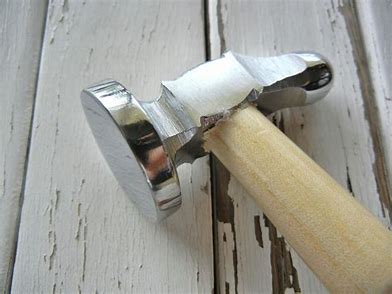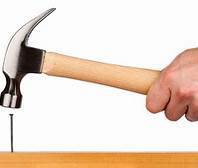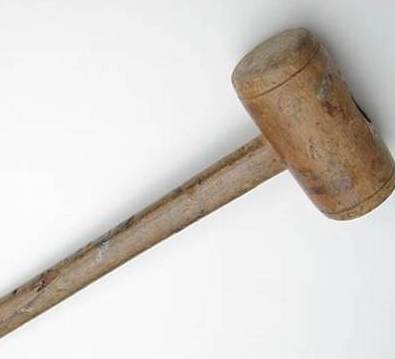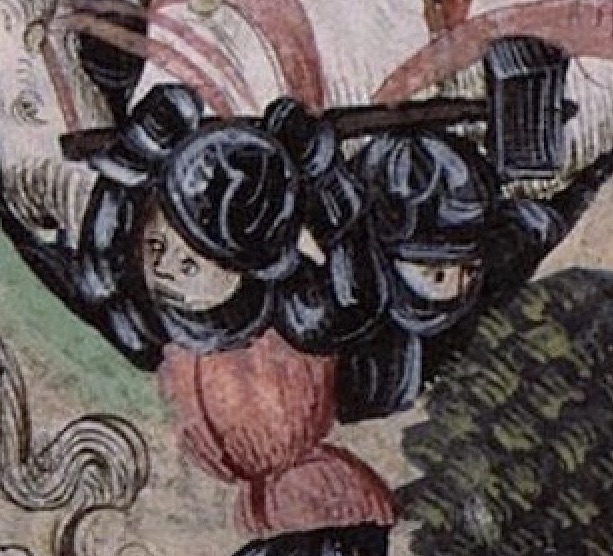
 |
||||||||
|
|
||||||||
In my work as a professional swordsman and researcher of historical combat there is one question I am asked more than any other: “Why are there so many different swords?” Swords were produced to meet different needs and functions. It's a synergy of both material and design.The simplest answer then, is that it’s for the same reason why there are so many different kinds of firearms or cars...or hammers.  Here’s a good way of understanding how material and design affect the
function of a sword: consider a simple hammer. There are all kinds of
different hammers. Each type is specialized for either a general need or
a particular task. Just as you can take any type of hammer and attempt
to use it as any other kind of hammer, you can certainly do the same
with different kinds of swords. Even though one kind is not going to
perform effectively at a job that it’s not optimally designed for you
can still try to employ it in whatever way circumstances necessitate.
But the best results will always occur when a tool is employed in the
manner best suited to whatever work it was intentionally created. After
all, a sledgehammer is not used like a ball-peen hammer and a rubber
mallet is obviously not employed in the same was as a geologist’s hammer
or stonemason’s or a brass-tack hammer. In this same way, a carpenter’s
hammer is not used like a blacksmith’s hammer. Here’s a good way of understanding how material and design affect the
function of a sword: consider a simple hammer. There are all kinds of
different hammers. Each type is specialized for either a general need or
a particular task. Just as you can take any type of hammer and attempt
to use it as any other kind of hammer, you can certainly do the same
with different kinds of swords. Even though one kind is not going to
perform effectively at a job that it’s not optimally designed for you
can still try to employ it in whatever way circumstances necessitate.
But the best results will always occur when a tool is employed in the
manner best suited to whatever work it was intentionally created. After
all, a sledgehammer is not used like a ball-peen hammer and a rubber
mallet is obviously not employed in the same was as a geologist’s hammer
or stonemason’s or a brass-tack hammer. In this same way, a carpenter’s
hammer is not used like a blacksmith’s hammer. In any case though, a hammer (just like a sword) will be devised for the type of target material it will be striking and the kind of impacts it will be making. Logically, you're going to want a balanced and sturdy design that has an appropriate weight, reasonable size, suitable shaft and grip, and a striking portion that achieves acceptable results with the least effort.  When you want a tool to drive a nail you can optimally design it for the
type of nails you’ll be hammering in to what kind of material.
Naturally, there’s going to be a lot of different factors involved. Not
the least of these is “hammering” itself. A master carpenter or skilled
builder can easily drive a nail straight in with one precise hit
compared to the multiple attempts necessary by someone less experienced.
It’s A readily self-evident thing to witness. This means that a good
hammer can perform quite differently in different hands. Yet no hammer
is deliberately made for amateur or inept hammerers. When you want a tool to drive a nail you can optimally design it for the
type of nails you’ll be hammering in to what kind of material.
Naturally, there’s going to be a lot of different factors involved. Not
the least of these is “hammering” itself. A master carpenter or skilled
builder can easily drive a nail straight in with one precise hit
compared to the multiple attempts necessary by someone less experienced.
It’s A readily self-evident thing to witness. This means that a good
hammer can perform quite differently in different hands. Yet no hammer
is deliberately made for amateur or inept hammerers. The material you make a hammer out of is certainly going to have a huge effect on what it can do as well. One material or another will be more durable and lighter and have a better effect on whatever you’re striking. A stone hammer is hardly as effective as a metal one and a wooden one generally far less useful than an iron one. Plus, when making a hammer some material might be harder to work with yet not be of much advantage. (No one bothers to make a gold or titanium hammer, for instance, when high-carbon steel will do nicely with much lower cost and labor.) All this is essentially the attitude we can take when thinking about swords. We don't just examine a sword from a "materials point of view" by only looking at its forging and metallurgy without also taking into consideration its design elements and overall geometry. Even then, you must consider above all else its performance characteristics —the attributes affecting its utility as a pragmatic tool. After all, an expert carpenter is going to have an opinion on what makes a good construction hammer that is likely quite different from the ideas of a complete novice. The expert user might ask for a heavier hammer with a smaller head and longer shaft while a beginner might require a shorter, lighter one with a larger head. It all depends on their ability combined with the intended purpose of their hammer. The expert will evaluate a hammer very differently than will an amateur. To a large degree it's the same with swords.  Today, whatever their variety, hammers are essentially functional tools.
Unlike with swords in the modern world, we don't really have a need for
"costume hammers" or "prop hammers" or even safe "training hammers." We
don't really have "hammer craftsman" or "hammer artisans" more
interested in using exotic materials they can decorate in order to
display their artistic talents. We also don't have hammer manufacturers
interested in producing inexpensive “hammer-like” objects that look good
hanging on a wall or for use only when "going through the motions" of
hammering. Today, whatever their variety, hammers are essentially functional tools.
Unlike with swords in the modern world, we don't really have a need for
"costume hammers" or "prop hammers" or even safe "training hammers." We
don't really have "hammer craftsman" or "hammer artisans" more
interested in using exotic materials they can decorate in order to
display their artistic talents. We also don't have hammer manufacturers
interested in producing inexpensive “hammer-like” objects that look good
hanging on a wall or for use only when "going through the motions" of
hammering. To carry the whole hammer analogy further, if making a hammer for someone to, more or less, pretend they’re hammering make-believe nails, then again, it's not necessarily an object made in the manner of the original. It might be something that resembles a historical hammer in appearance and can pass for a real hammer on stage and film or some virtual setting. But concern for actually performing like a certain type of real hammer is just not going to be a crucial parameter of its design. Similarly, if making a hammer not intended so much for actual hammering but to display an expertise in working metal by hand to bring out aesthetic patterns and pleasing designs; to show off a capacity to temper it in different ways or artistically craft a beautiful handle; well then, that's making a different kind of “hammer” altogether. And if the hammer-maker themselves has no particular skill in earnestly wielding the tool, well, that should certainly be a concern for how authentic their models could possibly be. This then is the case with swords today.  While
historical sword-smiths did do all manner of artistic and
technological things to actual fighting blades, that was not the reason
for making a sword. Producing a good fighting weapon was the reason.
Today then, if you want to understand how expert "historical hammerers"
used fine "hammers" and became good at their “art of hammering,” then
obviously you're going to want to study with the most accurate
reproduction of an original specimen that you can get. If you are going
to want to gain an appreciation for the authentic skill of using a fine
specimen, you will want something that approximates and represents what
kinds were proven to have worked. You are going to want to
have one that is sturdy, well-balanced, reliable, affordable, and
patterned on real world versions. You will want to understand the
genuine techniques and real effects of they had on their intended
targets. This is true whether or not you will ever actually "hammer real
nails into real wood." A good sword then, like a good hammer, should
look, feel, and perform as closely as possible to the real thing. That's
no easy achievement. But fortunately, among a few who are paying proper
attention, it can and
is being done once more. While
historical sword-smiths did do all manner of artistic and
technological things to actual fighting blades, that was not the reason
for making a sword. Producing a good fighting weapon was the reason.
Today then, if you want to understand how expert "historical hammerers"
used fine "hammers" and became good at their “art of hammering,” then
obviously you're going to want to study with the most accurate
reproduction of an original specimen that you can get. If you are going
to want to gain an appreciation for the authentic skill of using a fine
specimen, you will want something that approximates and represents what
kinds were proven to have worked. You are going to want to
have one that is sturdy, well-balanced, reliable, affordable, and
patterned on real world versions. You will want to understand the
genuine techniques and real effects of they had on their intended
targets. This is true whether or not you will ever actually "hammer real
nails into real wood." A good sword then, like a good hammer, should
look, feel, and perform as closely as possible to the real thing. That's
no easy achievement. But fortunately, among a few who are paying proper
attention, it can and
is being done once more. See also: Swordsmen and Swordsmiths 5-2021 A version of this piece originally appeared in 2015 on the Museum Replicas Limited Blog, Thinking About Swords
|
|
|
|||
|
|
|||
|
|||